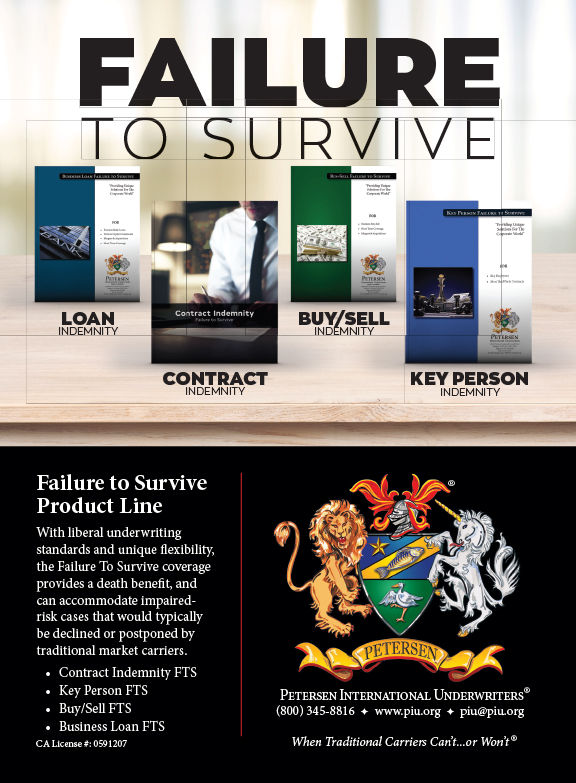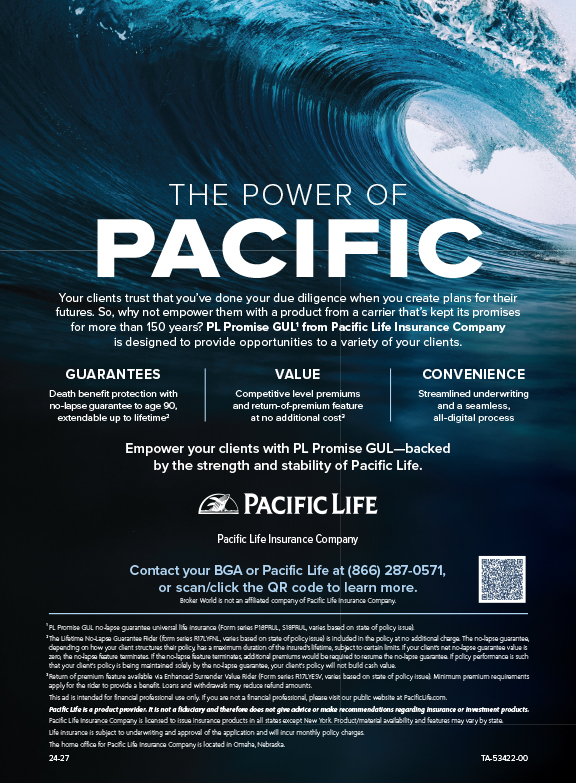Like Willy Wonka’s chocolate factory, we now live in a world of “combo” confections coming in all combinations of flavors, sizes and colors. Confusion, misunderstandings and frankly a potential abundance of experience disappointments, stand before us like a solid and forbidding rock candy mountain. Some light has been recently shed on the mysteries and old wive’s tales frequently attributed to the two birds with one stone, have your cake and eat it too aficionados. LIMRA, with the hard work of an SOA LTC Section Council member, has recently released a new combo life study helping clear the fog. The study is titled “Combination Products: A One-Stop Solution?” (full annotation at the end). I would not want to offend LIMRA by publishing any direct information in this column. Instead I will take my usual liberties to paraphrase, embellish and interpret my own personal observations from this excellent work.
Combo life policies do seem to offer solutions to the most common historical complaints concerning stand-alone LTCI health products. They certainly are simpler to explain with fewer moving parts, fewer consumer buying decisions, and the offer of additional stability providing at least the availability of guaranteed premiums and benefits. But the biggest boogie man put down triumphantly is the demise of the dreaded “Use it or Lose it” monster selling objection. Someone is going to get some money period. The study identified three categories of product offerings: 1) Life with chronic illness—IRC Section 101g; 2) Life with long term care—IRC Section 7702B; and 3) Life with an EOB rider paying both an acceleration of life benefits and an extension of benefits paid beyond the face amount—all as a long term care benefit. Not all companies in this market participated in the study. For the purposes of this article I would guess somewhere around 50 companies or so have some form of rider available.
What we learned:
- Confirming again that the number one impediment to sales is cost and that we have clearly limited our market penetration to those wealthier members of our country. It was again acknowledged that perhaps the only way to move this to the middle class is with the use of less expensive chronic illness riders.
- Consumers like combo products specifically because their premium is never in jeopardy. There can never be any losers.
- As you may know, the CMA in 2018 will now allow Medicare Advantage plans to add some long term care benefits. However the most expensive component remains care community monthly cost which, in my humble opinion, will remain the responsibility of private citizens. The quest for economic assistance in time of need persists. New reliable and affordable alternatives must step forward.
- The vast majority of product offerings are life CI, although some form of rider is available with all policy form options from term to variable.
- The industry deserves a compliment, as overwhelmingly companies offer product to meet market need. Offense in this case creates a better quality of rider than defensive moves to accommodate distribution.
- Companies are trying to reach more middle class buyers, lowering face amounts and target ages.
- Companies are for the most part relying on existing distribution strategies with only a few building out new ones.
- Underwriting practices and philosophy are frankly all over the board. This is of course good, or bad, or both…too early to tell.
The study ends with five key issues that stand before us: Consumer perceptions of the new offerings; product visibility; regulatory and compliance concerns; operational friction as dual administration issues require the ability to walk and chew gum; and, finally, risk management strategies in a new line of business without sufficient experience.
However, the most important finding from the majority of surveyed consumers was…they want to buy! There is something very basic, charming and endearing about simplicity—hopefully guaranteed premiums with guaranteed benefits that we should all find extremely attractive.
Other than that I have no opinion on the subject.
Reference:
“Combination Products: A One-Stop Solution?” LIMRA. Authors: Scott R. Kallenbach, FLMI, Director, Strategic Research, LIMRA, and Linda Chow, FSA, MAAA, Senior Actuarial Consultant, Ernst & Young LLP.





























Dangling Participles
Suggesting that Americans are unprepared for inevitable future emotional and financial turmoil falls into the cosmic understatement category. Only one in five have a will or any last directives. Just a little over half own any form of life insurance. We are lousy at saving, having an average of only $15,000 put aside. Yet we somehow continue to have faith that a leprechaun will appear at the end of life’s journey and provide financial sustenance for our marital partners, largesse and remembrance for our grandchildren, private rooms at five-star hospitals and beautiful Swedish nurses for our superior one-on-one care at home.
Fantasy is wonderful at a superhero movie. It has, however, always been a measure of your powers of persuasion that allows a small dose of reality to intrude and provide some attempt at planning ahead. Believing that your sales presentation succeeds based on your skills to illuminate financial risk suffers from the same hubris that allows consumers to boast that they bought insurance because they are simply wise and wholly committed to protect themselves and their loved ones. Forgive my skepticism!
In my humble opinion, and frequently mentioned in this column, the only source of buying behavior is the 51 million living parents of aging hippies. The discomfort and uncertainty generated by those living the problem becomes painfully obvious to all but the most severely myopic.
Life insurance sales in general remain flat or, perhaps more accurately, sinking slowly in a national malaise of indifference. There is one exception: Combo life. I can’t imagine a more natural merger of concepts, as the number one cause of death is, after all, chronic illness.
There are, give or take, about 50 companies that have succumbed to the most frequent rhetorical question of today’s sale efforts: “Does your life insurance provide long term care/chronic illness benefits if needed?” Again, as endlessly suggested in this column, it is simply too easy to sell against those who do not.
Remembering again that this is an opinion column, the 80/20 rule now applies. Regardless of which IRC code is your cup of tea, about 20 percent offer something of real value and 80 percent do not! Much of what masquerades as a combination of risk amelioration is seriously flawed behind the mask. The added rider too often appears as a half-hearted accommodation to pressure from the field and a self-serving desire to be able to claim “me too!”
Why is it so hard to do this right?
Clearly there are companies that took the time , effort and investment to provide a quality alternative to stand-alone LTCI. And once again there is nothing wrong with long term care protection resting squarely on a health insurance chassis. It is the inherent structural limitations of health insurance that fuels the conversation of offering a combination option in the first place. Health insurance has multiple moving parts as it indemnifies various specific risks, it remains vulnerable to ongoing experience and, by definition, it must be extensively underwritten.
Which part of the above did you not already know? Combo policies therefore begin by answering the historical complaints of LTCI: Too many moving parts, embarrassing rate increases and lethargic underwriting practices. It doesn’t get any simpler than a percentage of the face amount paid monthly, available guaranteed premium rates and streamlined underwriting progressively accessing virtual underwriting technology.
Recently, and old friend from a long established brokerage general agency sent over their current spreadsheet for combo sales and asked, “What am I missing?” Most of the time I would have glanced at the list of companies and made a few offhand recommendations. But I knew that this agency principal cared about what was sold and represented in their name. I therefore stopped and carefully provided a much different list of what makes a good, versus an inadequate, combo product offering:
If the answer is no to any of the above, there better be a very good reason beyond quality and your desire to offer only the best to include the offering in your inventory!
Other than that I have no opinion on the subject .